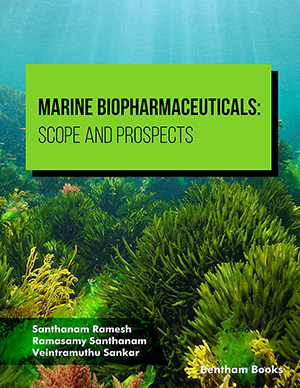[1]
Mabberley DJ. Mabberley’s plant-book: A portable dictionary of plants, their classifications and uses. 3rd ed. Seattle: University of Washington Botanic Gardens, Cambridge University Press 2008; p. 606.
[2]
Chowdhery H. Orchid diversity in north-east India. J Orchid Soc India 2001; 15: 1-17.
[3]
Medhi RP, Chakrabarti S. Traditional knowledge of NE people on conservation of wild orchids. Indian J Tradn Knowl 2009; 8: 11-6.
[4]
Keerthiga M, Anand S. Study on preliminary phytochemical and antibacterial activity against human pathogens of an endangered orchid- Habenaria plantaginea Lindl. Int J Pharm Sci Res 2015; 6: 1101.
[5]
Virk JK, Bansal P, Gupta V, Kumar S, Singh R. Lack of pharmacological basis of substitution of an endangered plant group Ashtawarga - A significant ingredient of polyherbal formulations. Am J Phytomed Clin Ther 2015; 2: 690-712.
[7]
Warrier P, Nambiar V, Ramankutty C. Indian Medicinal Plants: A compendium of 500 species Kottakkal, India Vol 1. Delhi: Orient Longman Publishers 1994; p. 191.
[8]
Kirtikar KR, Basu BD. Indian Medicinal plants An illustrated dictionary. Springer Science & Business Media 1994; Vol. 4: p. 2413.
[9]
Mohanty J, Pal P, Barma AD. An overview on orchids. Univ J Pharm Sci Res 2015; 1: 45-50.
[10]
Rawat S, Andola H, Dhyani P, Jugram A, Bhatt ID, Rawal RS. Assessment of nutritional and antioxidant potential of selected vitality strengthening Himalayan medicinal plants. Int J Food Prop 2014; 17: 703-12.
[11]
Goudar MA, Jayadevappa H, Mahadevan KM, Shastry RA, Habbu PV, Sayeswara HA. Isolation and characterization of secondary metabolite from Habenaria intermedia D. Don for evaluation of hepatoprotecitve activity against carbon tetrachloride induced liver damage in albino rats. Asian J Pharm Clin Res 2015; 8: 194-8.
[12]
Goudar MA, Jayadevappa H, Mahadevan KM, Shastry RA, Habbu PV, Sayeswara HA. Isolation and characterization of secondary metabolite from Habenaria intermedia D. Don for screening of hepatoprotecitve potential against carbon tetrachloride induced toxicity in albino rat liver. Int J Curr Pharm Res 2015; 7: 57-61.
[13]
Sahu M, Sahu R, Verma A. Immunomodulatory activity of alcoholic extract of Habenaria intermedia in mice. Int J Pharm Pharm Sci 2013; 5: 406-9.
[14]
Habbu PV, Smita DM, Mahadevan KM, Shastri RA, Biradar SM. Protective effect of Habenaria intermedia tubers against acute and chronic physical and psychological stress paradigms in rats. Braz J Pharmacogn 2012; 22: 568-79.
[15]
Ved DK, Kinhal GA, Ravikumar K, et al. Proceedings of Conservation Assessment and Management Prioritization for the Medicinal Plants of Jammu and Kashmir, Himachal Pradesh and Uttarakhand; FRLHT. Banglore 2003.
[16]
Kant R, Verma J, Thakur K. Distribution pattern, survival threats and conservation of Astavarga orchids in Himachal Pradesh, Northwest Himalaya. Plant Arch 2012; 12: 165-8.
[17]
Ahuja PS. Medicinal plants in India: Report and directory.
New Delhi: Institute of economic and market
research 2003.
[18]
Subedi A, Kunwar B, Choi Y, et al. Collection and trade of wild-harvested orchids in Nepal. J Ethnobiol Ethnomed 2013; 9: 64.
[19]
Chauhan R, Nautiyal M, Prasad P. Habenaria intermedia D. Don - An endangered medicinal orchid. McAllen Int Orchid Soc J 2007; 8: 15-20.
[22]
Virk JK, Gupta V, Kumar S, Singh R, Bansal P. Ashtawarga plants - Suffering a triple standardization syndrome. J Tradit Complement Med 2017; 7: 392-9.
[23]
Niciforovic N, Abramovic H. Sinapic acid and its derivatives: Natural sources and bioactivity. Compr Rev Food Sci Food Saf 2014; 13: 34-51.
[24]
Bunzel M, Ralph J, Kim H, et al. Sinapate dehydrodimers and sinapate-ferulate heterodimers in cereal dietary fiber. J Agric Food Chem 2003; 51: 1427-34.
[25]
Sawa T, Nakao M, Akaike T, Ono K, Maeda H. Alkylperoxyl radical-scavenging activity of various flavonoids and other phenolic compounds: implications for the anti-tumor-promoter effect of vegetables. J Agric Food Chem 1999; 47: 397-402.
[26]
Cai R, Arntfield S. A rapid high-performance liquid chromatographic method for the determination of sinapine and sinapic acid in canola seed and meal. J Am Oil Chem Soc 2001; 78: 903-10.
[27]
Koski A, Pekkarinen S, Hopia A, Wahala K, Heinonen M. Processing of rapeseed oil: Effects on sinapic acid derivative content and oxidative stability. Eur Food Res Technol 2003; 217: 110-4.
[28]
Kuwahara H, Kanazawa A, Wakamatu D, et al. Antioxidative and antimutagenic activities of 4-vinyl-2,6-dimethoxyphenol (canolol) isolated from canola oil. J Agric Food Chem 2004; 52: 4380-7.
[29]
Moreno DA, Balibrea SP, Ferreres F, Izquierdo AG, Viguera CG. Acylated anthocyanins in broccoli sprouts. Food Chem 2010; 123: 358-63.
[30]
Engels C, Schieber A, Ganzle MG. Sinapic acid derivatives in defatted oriental mustard (Brassica juncea L.) seed meal extracts using UHPLC-DADESI- MSn and identification of compounds with antibacterial activity. Eur Food Res Technol 2012; 234: 535-42.
[31]
Karamac M, Kosinska A, Rybarczyk A, Pegg RB. Chromatographic separation of phenolic compounds from rapeseed by SE-HPLC -A short report. Pol J Food Nutr Sci 2007; 57: 87-90.
[32]
Khattab R, Eskin M, Aliani M, Thiyam U. Determination of sinapic acid derivatives in canola extracts using high-performance liquid chromatography. J Am Oil Chem Soc 2010; 87: 147-55.
[33]
Mayengbam S, Aachary A, Thiyam-Holländer U. Endogenous phenolics in hulls and cotyledons of mustard and canola: A comparative study on its sinapates and antioxidant capacity. Antioxidants 2014; 3: 544-58.
[34]
Kua SF, Ibrahim J, Ooi CKW, Nan KI, Hashim N, Yusof HM. Optimisation of phenolic extraction and quantification of phenolics in palm kernel cake. Renew Bioresour 2015; 3: 2.
[35]
Luthria DL, Pastor-Corrales AP. Phenolic acids content of fifteen dry edible bean (Phaseolus vulgaris L.) varieties. J Food Compos Anal 2006; 19: 205-11.
[36]
Hillebrand S, Schwarz M, Winterhalter P. Characterization of anthocyanins and pyranoanthocyanins from blood orange (Citrus sinensis (L.) Osbec) juice. J Agric Food Chem 2004; 52: 7331-8.
[37]
Maddox CE, Laur LM, Tian L. Antibacterial activity of phenolic compounds against the phytopathogen Xylella fastidiosa. Curr Microbiol 2010; 60: 53-8.
[38]
Kikuzaki H, Hisamoto M, Hirose K, Akiyama K, Taniguchi H. Antioxidant properties of ferulic acid and its related compounds. J Agric Food Chem 2002; 50: 2161-8.
[39]
Zou Y, Kim AR, Kim JE, Choi JS, Chung HY. Peroxynitrite scavenging activity of sinapic acid (3,5-dimethoxy-4-hydroxycinnamic acid) isolated from Brassica juncea. J Agric Food Chem 2002; 50: 5884-90.
[40]
Yun KJ, Koh DJ, Kim S, et al. Anti-inflammatory effects of sinapic acid through the suppression of inducible nitric oxide synthase, cyclooxygase-2, and proinflammatory cytokines expressions via nuclear factor-k B inactivation. J Agric Food Chem 2008; 56: 10265-72.
[41]
Hudson EA, Dinh PA, Kokubun T, Simmonds MS, Gescher A. Characterization of potentially chemopreventive phenols in extracts of brown rice that inhibit the growth of human breast and colon cancer cells. Cancer Epidemiol Biomarkers Prev 2000; 9: 1163-70.
[42]
Kampa M, Alexaki VI, Notas G, et al. Antiproliferative and apoptotic effects of selective phenolic acids on T47D human breast cancer cells: potential mechanisms of action. Breast Cancer Res 2003; 6: R63-74.
[43]
Kanchana G, Shyni W, Rajadurai M, Periasamy R. Evaluation of antihyperglycemic effect of sinapic acid in normal and streptozotocin-induced diabetes in albino rats. Glob J Pharmacol 2011; 5: 33-9.
[44]
Cherng YG, Tsai CC, Chung HH, Lai YW, Kuo SC, Cheng JT. Antihyperglycemic action of sinapic acid in diabetic rats. J Agric Food Chem 2013; 61: 12053-9.
[45]
Sun XL, Ito H, Masuoka T, Kamei C, Hatano T. Effect of Polygala tenuifolia root extract on scopolamine-induced impairment of rat spatial cognition in an eight-arm radial maze task. Biol Pharm Bull 2007; 30: 1727-31.
[46]
Lee HE, Kim DH, Park SJ, et al. Neuroprotective effect of sinapic acid in a mouse model of amyloid β(1-42) protein-induced Alzheimer’s disease. Pharmacol Biochem Behav 2012; 103: 260-6.
[47]
Yoon BH, Jung JW, Lee JJ, et al. Anxiolytic-like effects of sinapic acid in mice. Life Sci 2007; 81: 234-40.
[48]
He L, Li H, Guo S, et al. Inhibitory effects of sinapine on activity of acetylcholinesterase in cerebral homogenate and blood serum of rats. Zhongguo Zhongyao Zazhi 2008; 33: 813-5.
[49]
Ferreres F, Fernandes F, Sousa C, Valentão P, Pereira JA, Andrade PB. Metabolic and bioactivity insights into Brassica oleracea var. acephala. J Agric Food Chem 2009; 57: 8884-92.
[50]
Wakamatsu D, Morimura S, Sawa T, Kida K, Nakai C, Maeda H. Isolation, identification, and structure of a potent alkyl-peroxyl radical scavenger in crude canola oil, canolol. Biosci Biotechnol Biochem 2005; 69: 1568-74.
[51]
Kuwahara H, Kanazawa A, Wakamatu D, et al. Antioxidative and antimutagenic activities of 4-vinyl-2,6-dimethoxyphenol (canolol) isolated from canola oil. J Agric Food Chem 2004; 52: 4380-7.
[52]
Chen C. Sinapic acid and its derivatives as medicine in oxidative stress-induced diseases and aging. Oxid Med Cell Longev 2015; 10.
[53]
Kim MS, Shin WC, Kang DK, Sohn HY. Anti-thrombosis activity of sinapic acid isolated from the lees of bokbunja wine. J Microbiol Biotechnol 2016; 26: 61-5.
[54]
Tesaki S, Tanabe S, Ono H, Fukushi E, Kawabata J, Watanabe M. 4-Hydroxy-3-nitrophenylacetic and sinapic acids as antibacterial compounds from mustard seeds. Biosci Biotechnol Biochem 1998; 62: 998-1000.
[56]
Silambarasan T, Manivannan J, Priya MK, Suganya N, Chatterjee S, Raja B. Sinapic acid prevents hypertension and cardiovascular remodeling in pharmacological model of nitric oxide inhibited rats. PLoS One 2014; 9: 1-20.
[57]
Sedai CP. Phytochemical profiling of Habenaria
edgeworthii hook. F. Ex collett (vriddhi) of Deoban
under Chakrata forest division. Dehradun, Uttarakhand:
Indian Council of Forestry Research & Education 2015.
[58]
Virk JK, Bansal P, Kumar S, Singh R, Rawal RK. Isolation and quantification of chemical marker of Polygonatum verticillatum: First report. Curr Tradit Med 2016; 2: 216-24.
[59]
Virk JK, Kumar S, Singh R, et al. Isolation and characterization of quinine from Polygonatum verticillatum: A new marker approach to identify substitution and adulteration. J Adv Pharm Tech Res 2016; 7: 153-8.
[60]
Virk JK, Gupta V, Kumar S, Singh R, Bansal P, Rawal RK. First report of isolation of maleamic acid from natural source Polygonatum cirrhifolium - A potential chemical marker for identification. J Liq Chromatogr Relat Technol 2017; 40: 1031-6.
[61]
Kligman LH, Kligman AM. The nature of photoaging: its prevention and repair. Photodermatol 1986; 3: 215-27.
[62]
Vuorela S, Meyer AS, Heinonen M. Impact of isolation method on the antioxidant activity of rapeseed meal phenolics. J Agric Food Chem 2004; 52: 8202-7.





























